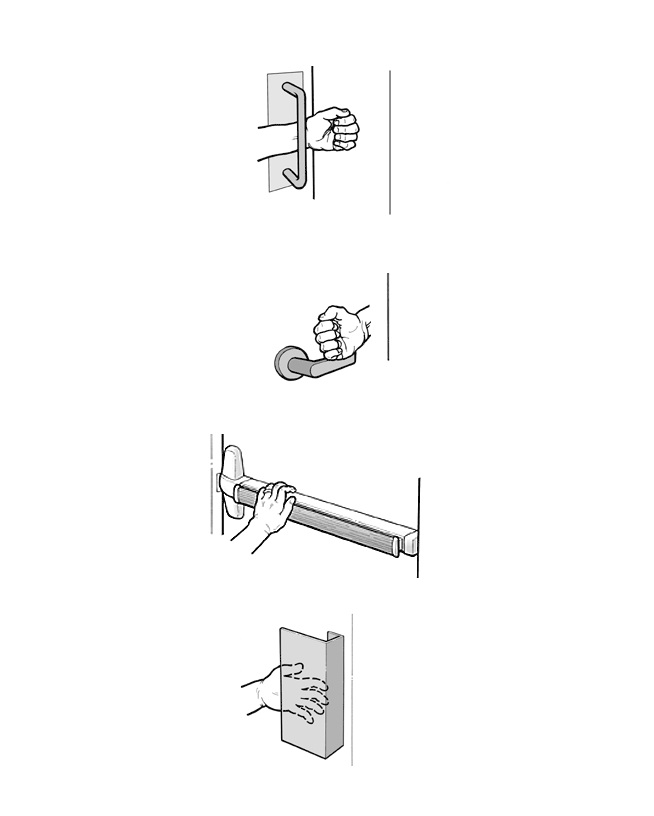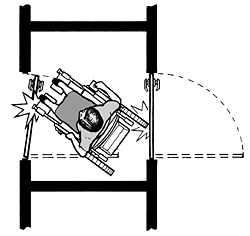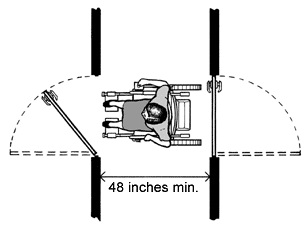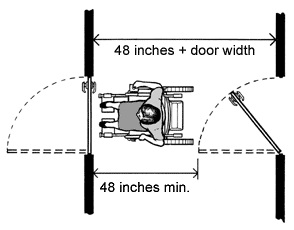Building Entrance Checklist
D1. Is there at least one accessible entrance connected to an accessible route?
[ADA Stds 4.1.3(1)]
Notes: If this entrance is not the main entrance, it needs to be kept unlocked during voting hours. If there are inaccessible entrances serving the polling place, signs will be needed at inaccessible entrance(s) to direct voters to the nearest accessible entrance.
Yes _____ No _____
D2. Does at least one door or one side of a double leaf door at the accessible entrance provide at least 32 inches clear passage width when the door is open 90 degrees?
[See figure 24 in the appendix at the back of the checklist]
Yes _____ No _____
If No, does another entrance have an accessible door or can both doors be propped open during voting? Other possible solutions are to enlarge the door opening, use a swing clear hinge, or, if a double leaf door, use uneven width doors.
D3. Is the door hardware (e.g., lever, pull, panic bar) usable with one hand without tight grasping, pinching, or twisting of the wrist? [ADA Stds 4.13.9]
Yes _____ No _____
If No, leave door propped open, add new accessible hardware, or adapt/replace hardware.

Examples of handles and door hardware that can be used without tight grasping, pinching, or twisting.
D4. On the pull side of the door, is there at least 18 inches clearance provided to the side of the latch if the door is not automatic or power-operated? [ADA Stds 4.13.6, figure 25]
Note: The maximum threshold height is 1/2 inch for new construction.
If No, leave the door propped open, install a power operator, or look for another accessible entrance.
Yes _____ No _____
D5. If there is a raised threshold, is it no higher than 3/4 inch at the door and beveled on both sides? [ADA Stds 4.1.6(3)(d)(ii), 4.13.8]
Yes _____ No _____
If No, replace threshold with one with beveled sides or add sloped insert to threshold.
D6. If an entry has a vestibule, is there a 30-inch by 48-inch clear floor space inside the vestibule where a wheelchair or scooter user can be outside the swing of a hinged door?
[ADA Stds 4.13.7]
Yes _____ No _____
If No, leave the inner door open or remove inner door, add power operators to both doors so they open at the same time or, modify the vestibule.

Insufficient space between doors makes the alcove inaccessible.

Minimum alcove depth of 48 inches if both doors open out

Minimum alcove depth of 48 inches + door width when door swings into alcove

User Comments/Questions
Add Comment/Question